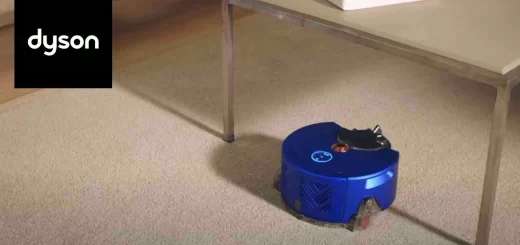Remotely-operated underwater vehicles (ROVs) Features, types, advantages and disadvantages
Remotely-operated underwater vehicle (ROV) is a vehicle that is controlled by the operator who is not in the vehicle, It can be operated by radio control or through the cable or line connecting the vehicle to the operators location, It will use the robust umbilical cable and tether management system in deep or rough water.
ROVs are the robots which complete the functions underwater on behalf of the crew, located on the surface , where ROV is tethered , The functions are searching/recovering , the inspection , the equipment repair , the scientific analysis, dredging & trenching, the cable-laying and the surveying.
The tether serves as the interface between ROV and the ship and it provides ROV with the electric power and control commands, while providing the crew with video and data feeds, The electrical systems are outfitted in the oil-filled water-tight or the pressurized compartments, High-power applications and the tools will receive the power from an on-board hydraulic pump.
Unmanned spacecraft remotely controlled spacecraft
The researchers have used the ships to photograph the depths, to drop the floats and the drifters into the currents & to collect the samples of water, rock & the marine life , The available observing tools have grown to include Human-occupied submersibles , Remote-controlled vehicles and Autonomous robots.
Human Occupied Vehicles (HOVs) accommodate three people and they are built to withstand the extreme pressure thousands of meters below the surface of the ocean and permit the scientists to make detailed observations , They collect specific samples , and place , retrieve or conduct the experiments on the seafloor and in the deep ocean .
Remotely Operated Vehicles (ROVs) are the tethered robots which allow the researchers to make the observations, collect the samples and conduct the experiments while controlling the vehicle from the surface, They are used by the scientific community to study the ocean and many deep-sea animals and plants are discovered through the use of ROVs.
ROVs can remain below the surface for a day or more at a time , and they can hover like the helicopter over the seafloor target or survey the wide area, The tether sends and receives the control signals , the vehicle sensor data & the images and it allows the pilot to control the vehicle’s manipulator arm in real time to help carry out the detailed experiments in the ocean .
ROV is one of Unmanned Underwater Vehicle (UUV) tethered with the umbilical cable and remotely operated by the vehicle operator’s , It is a mobile robot designed for the aquatic work environments , The remote control is carried out through the copper or fiber optic cables .
ROV is an unoccupied underwater robot, It is connected to the operator through the cables which transmit the command and control signals to and from ROV and the operator , allowing the remote navigation of the vehicle .
ROV is the tethered underwater mobile device , It is different from remote control vehicles operating on the land or in the air, It is unoccupied , highly maneuverable and operated by the crew aboard a vessel.
ROVs are common in the deep water industries such as the offshore hydrocarbon extraction , They are linked to the host ship by the neutrally buoyant tether or on working in the rough conditions or in deeper water , The load-carrying umbilical cable is used along with the tether management system (TMS) .
ROV is equipped with at least a video camera and the lights, There are additional equipment is commonly added to expand the vehicle’s capabilities which are the sonars, the magnetometers, various types of cameras , a manipulator or cutting/shearing tools, the water samplers and the instruments that measure the water clarity, the water temperature , the water density, the sound velocity, light penetration and temperature.
Autonomous Underwater Vehicles (AUVs) are the programmable , robotic vehicles which depending on their design , They can drift , drive or glide through the ocean without the human operators control , They can communicate with the operator periodically or continuously through the satellite signals or underwater acoustic beacons and they can make the decisions on their own .
The autonomous underwater vehicles (AUVs) are developed for the military usage and they have not yet been marketed to the other industries , They primarily stalk the enemy ships , protect the harbors and the mine sweep , They do not require the tether , They are expected to become available for the commercial applications once they have developed the niche in deep sea drilling and construction .
Remotely-operated underwater vehicle (ROV) disadvantages
Remote control range for the underwater ROV is limited by several factors , Radio waves in the form of the electromagnetic field do not propagate well through the water unless the frequency is so low that the bandwidth is limited , The restriction on the frequency makes the high data transfer rates which are required for the transmission of full-motion video, impossible .
The direct-beam optical communications systems range is limited by the lines of sight and the turbidity of the water , It is impractical to have the cable of any type longer than a few kilometers .
The sea mammals, the notably whales, communicate underwater over the distances of many kilometers using the acoustic waves , So, The sound and ultrasound have been considered for the remote control of underwater ROVs, The main problem is the low propagation speed that translates into significant latency over the long distances.
Unmanned aerial vehicle (UAV) uses, advantages and disadvantages
Autonomous Fire Fighter Robot importance, types and uses
Industrial robot ( Auto industry ) uses, advantages and disadvantages




